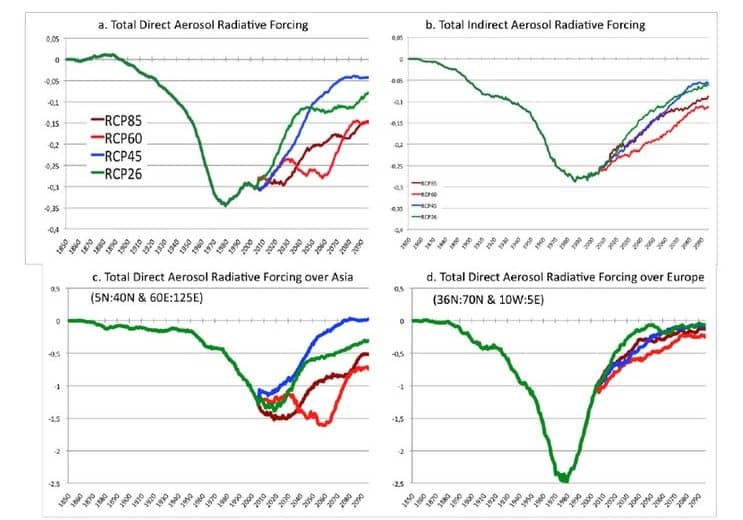
The global energy balance is sensitive to cloud albedo, and most particularly towards marine stratus (low-level) clouds which cover about 25% of the Earth. Cloud albedo is itself sensitive to changes in the cloud droplet number concentration. This droplet number depends, in a complex manner, on the concentration of cloud condensation nuclei (CCN), which, in turn, depends on aerosol concentration. Through this indirect effect, the negative radiative forcing caused by anthropogenic aerosol emissions might be further increased.
Particles of sizes around 0.1m diameter composed of water soluble substances are highly effective as CCN. This includes both sulphate aerosols and organic aerosols from biomass burning. Direct observations of the impact of CCN on cloud albedos have been reported (Coakley et al., 1987; Kim & Cess, 1993). Estimates from modelling studies of the indirect radiative effects of aerosols vary widely. Jones et al. (1994) calculated the indirect global-mean effect since pre-industrial times to be about -1.3Wm-2, whilst Kaufman & Chou (1993) found a forcing of -0.45Wm-2. Despite the level of uncertainty, indirect negative radiative forcing is believed to be comparable to the direct forcing.




Leave a Reply